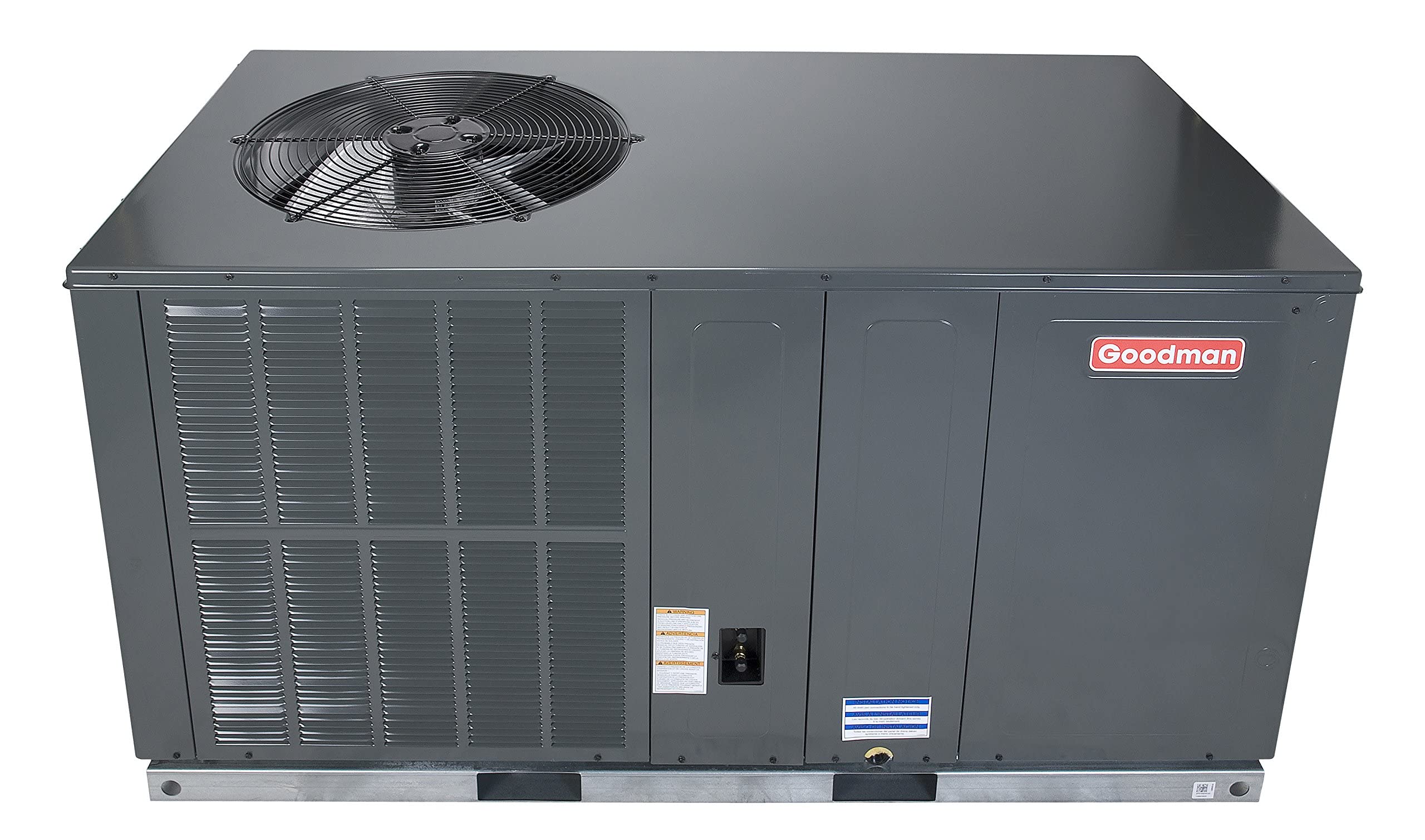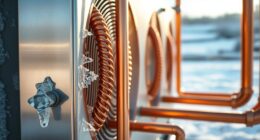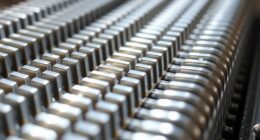Welcome to our guide on installing and servicing residential heat pumps. We provide all the necessary details to help you make knowledgeable choices and achieve the best performance.
From understanding the basics to troubleshooting common issues, we’ll be your trusted companion throughout the process. So, let’s dive in and explore the world of heat pumps together, ensuring your home stays comfortable and efficient.
Let’s get started, shall we?
Key Takeaways
- Heat pumps are highly efficient HVAC systems that transfer heat from the outside air or ground into your home.
- When choosing a heat pump, consider factors such as the size of your space, climate conditions, and energy efficiency requirements. Look for high SEER and HSPF ratings.
- Proper heat pump sizing is crucial for optimal performance and efficiency. Consult with a professional HVAC technician for a load calculation to determine the optimal size.
- Regular maintenance, including cleaning or replacing filters, checking refrigerant levels, and inspecting ducts, is crucial for the heat pump’s optimal performance and longevity.
Understanding Heat Pumps: An Overview
We will provide you with an overview of heat pumps, including how they work and their benefits.

Heat pumps are highly efficient HVAC systems that use a small amount of energy to move heat from one place to another. They work by transferring heat from the outside air or ground into your home during the winter, and vice versa during the summer. This process is achieved through the use of a refrigerant that absorbs and releases heat as it circulates through the system.
The efficiency of heat pumps is measured by their Coefficient of Performance (COP), which indicates the amount of heat produced per unit of electricity consumed. One of the major benefits of heat pumps is their high energy efficiency, which can result in significant cost savings on heating and cooling bills.
Additionally, heat pumps provide both heating and cooling capabilities, making them a versatile solution for year-round comfort. With their ability to provide efficient heating and cooling, heat pumps offer a sustainable and cost-effective solution for homeowners.
Choosing the Right Heat Pump for Your Home
When selecting a heat pump for your home, it’s important to consider factors such as the size of your space, climate conditions, and energy efficiency requirements.
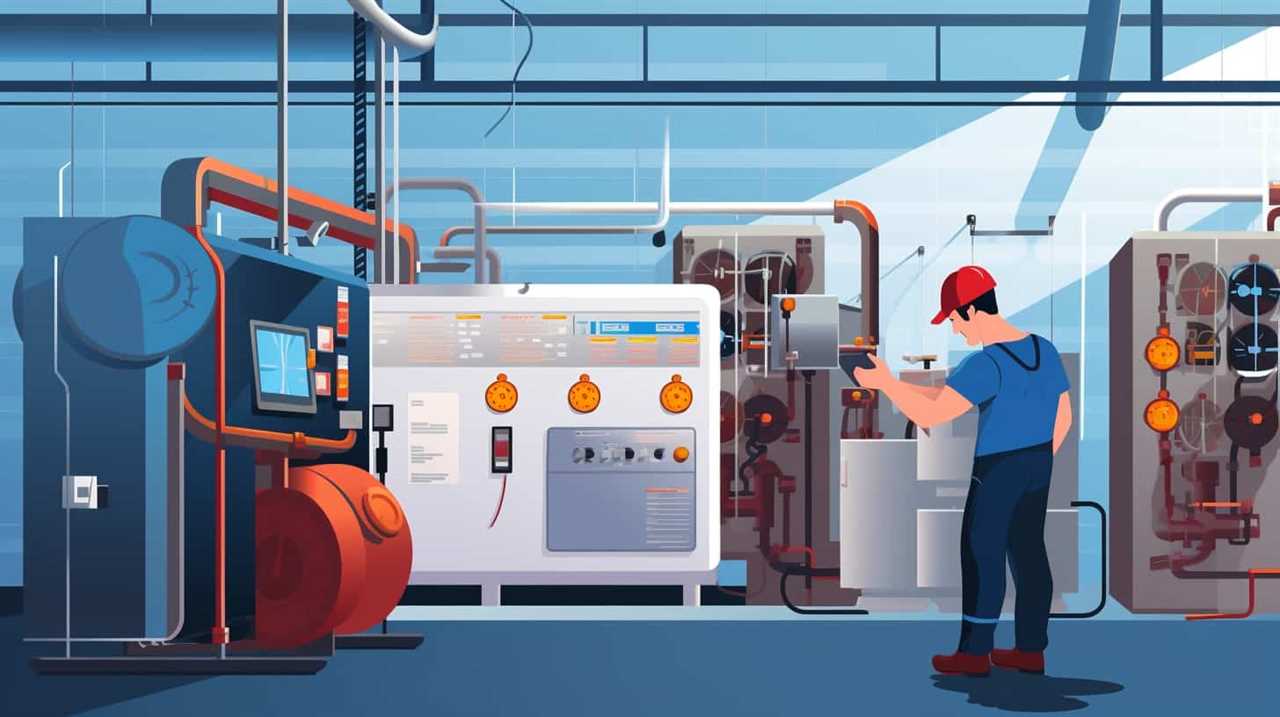
The efficiency of a heat pump is a crucial consideration, as it directly impacts its performance and operating costs. Look for a heat pump with a high Seasonal Energy Efficiency Ratio (SEER) and Heating Seasonal Performance Factor (HSPF) ratings. A higher SEER rating indicates better cooling efficiency, while a higher HSPF rating indicates better heating efficiency.
Additionally, consider the cost of the heat pump, including both the initial purchase cost and long-term operating costs. While energy-efficient models may have a higher upfront cost, they can save you money in the long run through reduced energy consumption.
Sizing and Placement of Residential Heat Pumps
When it comes to residential heat pumps, getting the sizing and placement right is crucial for optimal performance. We’ll discuss the three key points to consider:
-
Optimal heat pump size: Choosing the right size heat pump is essential to ensure efficient heating and cooling. A heat pump that is too small will struggle to meet the heating or cooling demands of the space, leading to inadequate comfort levels. On the other hand, a heat pump that is too large will cycle on and off frequently, resulting in energy wastage and potential wear and tear on the unit. It is important to consult with a professional to determine the appropriate heat pump size based on factors such as the size of the space, insulation levels, and climate conditions.
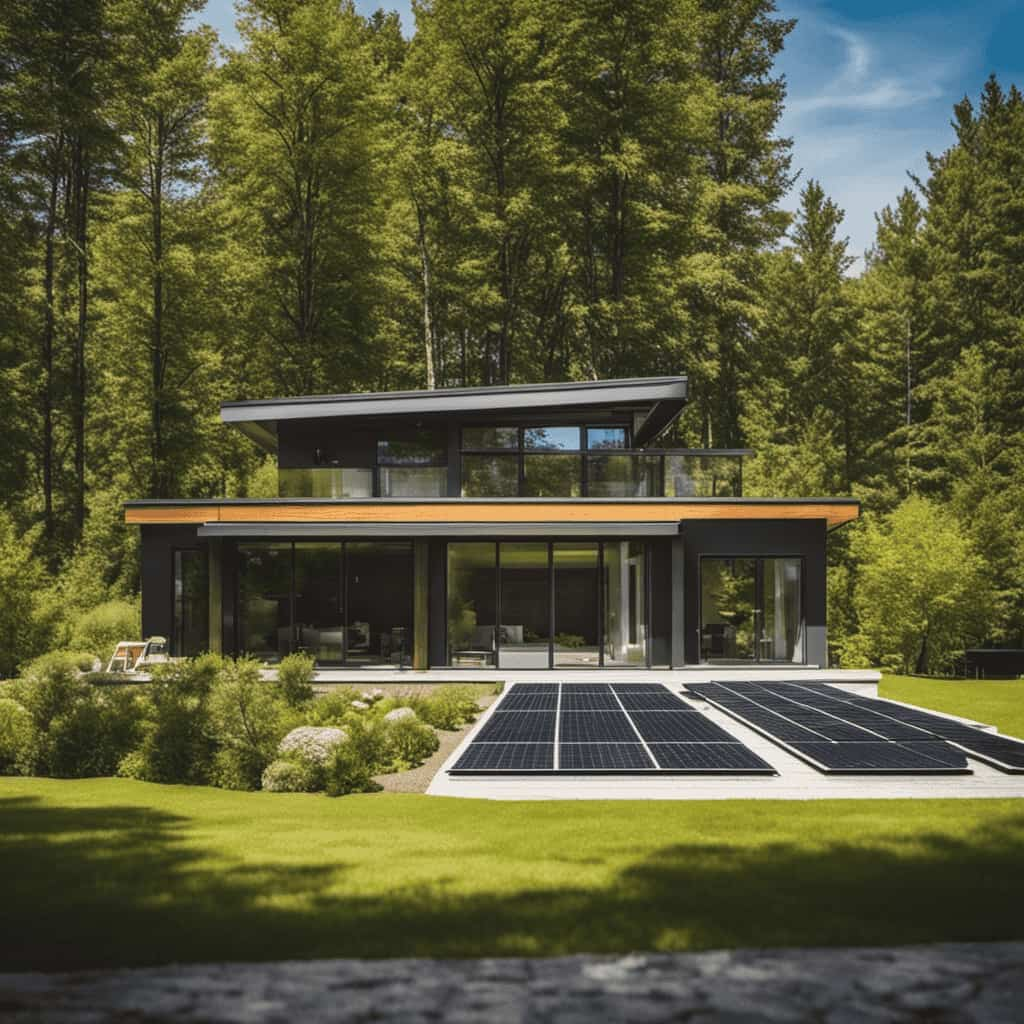
-
Ideal placement considerations: The placement of the heat pump can significantly impact its performance. It is recommended to install the outdoor unit in a well-ventilated area with sufficient clearance for air circulation. This ensures that the heat pump can expel heat effectively and operate efficiently. Additionally, the indoor unit should be strategically placed to distribute heated or cooled air evenly throughout the space. Avoid placing the indoor unit near sources of heat or drafts, as this can affect its ability to maintain consistent temperatures.
-
Efficient usage tips: To maximize energy savings and prolong the lifespan of the heat pump, homeowners should follow some usage tips. It is advisable to set the thermostat to the most comfortable temperature while considering energy conservation. Avoid drastic temperature adjustments as this can put extra strain on the unit. Regular maintenance, including cleaning or replacing filters, checking refrigerant levels, and inspecting ducts, is crucial to ensure the heat pump operates at its best. Additionally, sealing any air leaks in the house and insulating the space properly can help reduce the workload on the heat pump and improve its efficiency.
Optimal Heat Pump Size
Choosing the right size and placement for your residential heat pump is crucial for optimal performance and efficiency. The size of the heat pump directly affects its efficiency and performance, so it is important to ensure that it is properly sized for your home. Oversized heat pumps may cycle on and off frequently, leading to reduced efficiency and increased wear and tear on the system. Undersized heat pumps, on the other hand, may struggle to meet the heating or cooling demands of your home, resulting in decreased comfort levels.
To determine the optimal size for your heat pump, it is recommended to consult with a professional HVAC technician who can perform a load calculation. This calculation takes into account factors such as the size and layout of your home, insulation levels, and climate conditions. By analyzing this information, the technician can recommend the appropriate heat pump size that will provide efficient and effective heating and cooling throughout your home.
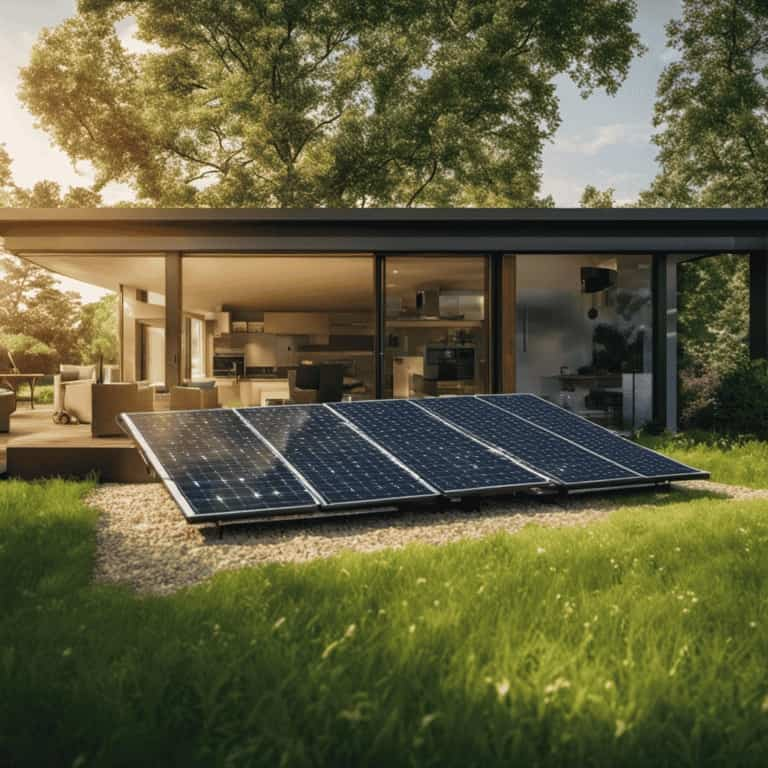
To give you a better understanding, here is a table showcasing the recommended heat pump size based on the square footage of your home:
| Square Footage | Heat Pump Size (Tons) |
|---|---|
| Up to 1,000 | 1.5 – 2.0 |
| 1,000 – 1,500 | 2.0 – 2.5 |
| 1,500 – 2,000 | 2.5 – 3.0 |
| 2,000 – 2,500 | 3.0 – 3.5 |
| 2,500 – 3,000 | 3.5 – 4.0 |
Ideal Placement Considerations
To ensure optimal performance and efficiency, we must carefully consider the size and placement of residential heat pumps. Placement considerations are crucial in maximizing the functionality of the system.
When deciding where to install the heat pump, it’s important to choose a location that provides adequate airflow and minimizes obstructions. The heat pump should be placed away from any potential sources of heat or moisture that could affect its performance.
Additionally, the unit should be positioned in a way that allows for easy access for maintenance and service. Proper installation tips include ensuring the unit is level, mounting it securely, and connecting it to the electrical and plumbing systems correctly.
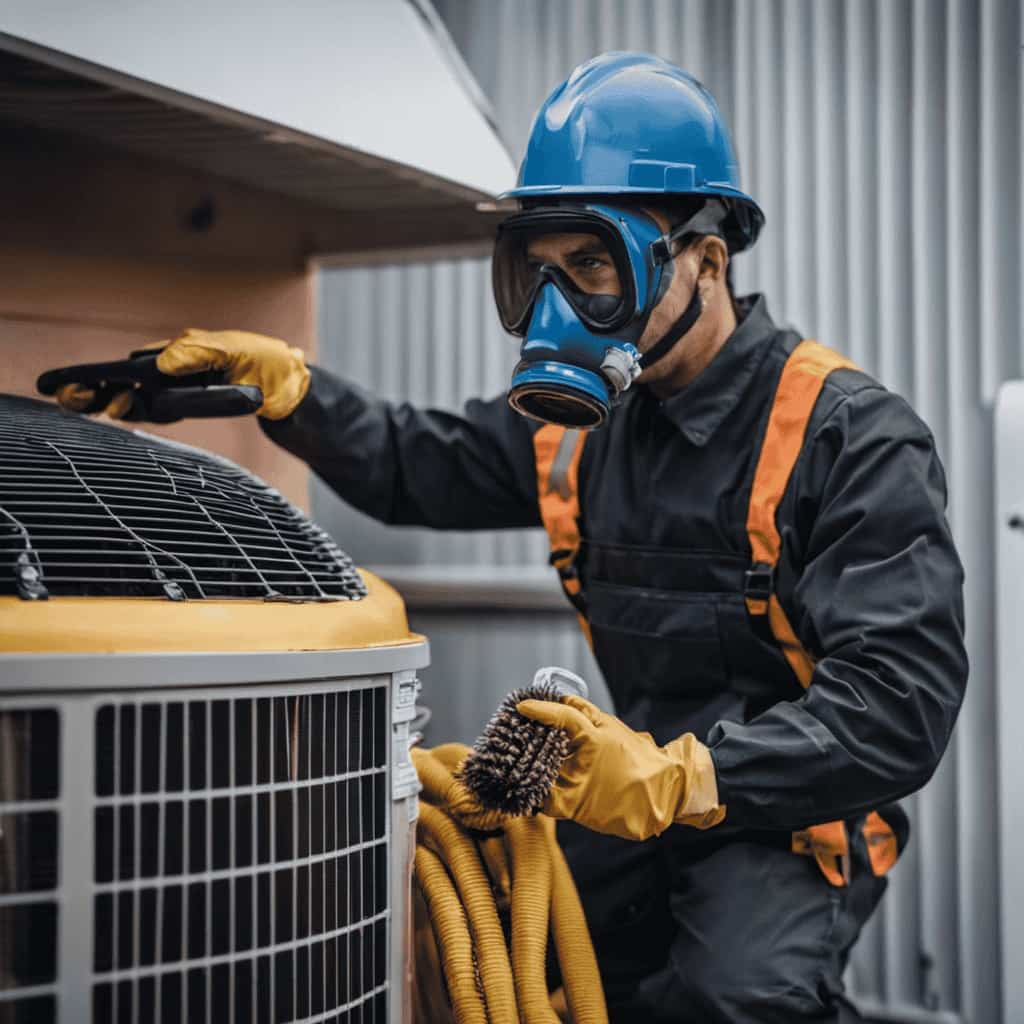
Following these placement considerations and installation tips will help to ensure the efficient and effective operation of the residential heat pump.
Efficient Usage Tips
We can achieve optimal efficiency by carefully considering the size and placement of residential heat pumps. To ensure energy saving techniques and money saving strategies, here are four important factors to keep in mind:
-
Proper sizing: It’s crucial to choose a heat pump that’s correctly sized for your home. An undersized unit will struggle to heat or cool your space efficiently, while an oversized unit will cycle on and off frequently, wasting energy.
-
Climate considerations: Take into account your local climate when selecting a heat pump. Different regions have different heating and cooling requirements, and choosing a unit that matches your specific climate will maximize efficiency.
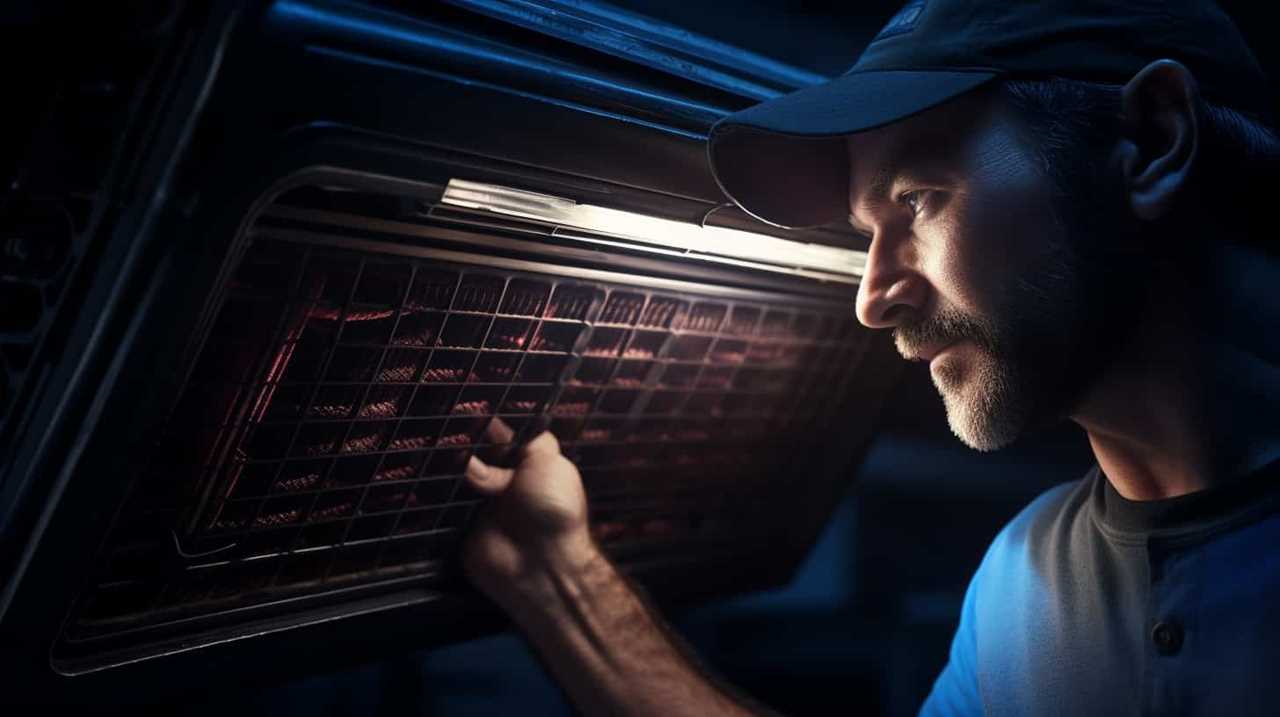
-
Placement: The location of the heat pump is important for efficient operation. Place it in a shaded area to prevent excessive heat exposure, and ensure that there’s sufficient airflow around the unit for proper ventilation.
-
Ductwork optimization: If your heat pump is connected to ductwork, make sure it’s properly sealed and insulated. Leaky ducts can result in significant energy losses, so regular maintenance and inspection are essential.
The Installation Process: Step-by-Step Guide
Let’s begin the installation process by preparing the site for the heat pump. Before we can install the heat pump, it’s crucial to ensure that the area is suitable and ready for the installation. This involves clearing any obstacles or debris that may hinder the process.
It’s also important to check the electrical connections and ensure that they’re in proper working condition. One common mistake during this stage is neglecting to troubleshoot any potential issues with the site, such as inadequate electrical capacity or improper ventilation.

By addressing these issues beforehand, we can avoid future complications and ensure a smooth installation process.
Now that we’ve prepared the site, let’s move on to the next section, which will cover essential maintenance tips for heat pumps.
Essential Maintenance Tips for Heat Pumps
To ensure optimal performance and longevity of your heat pump, regular maintenance is essential.
Two key maintenance tasks for heat pumps include regular filter cleaning and annual professional inspections.
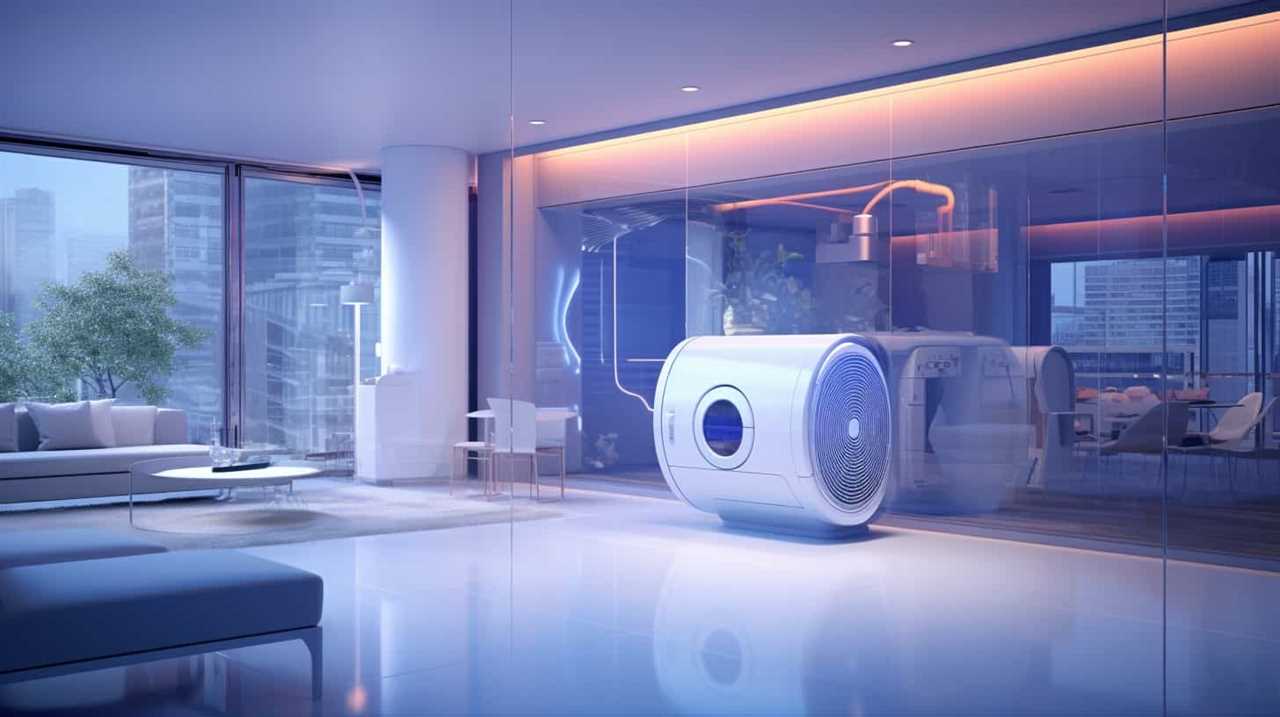
By keeping the filters clean, you can prevent dust and debris from clogging the system and impeding its efficiency.
Additionally, scheduling annual inspections with a professional technician will help identify any potential issues and ensure that your heat pump is functioning at its best.
Regular Filter Cleaning
Regularly cleaning the filters is an essential maintenance task for heat pump owners. Neglecting this task can lead to reduced airflow, decreased efficiency, and even system failure. To ensure optimal performance and prolong the lifespan of your heat pump, follow these four important steps for regular filter maintenance:
-
Check the filters at least once a month and clean or replace them as needed. Clogged filters restrict airflow and can cause the system to work harder, resulting in higher energy consumption.

-
Use a vacuum or a soft brush to remove any dust or debris from the filters. If the filters are washable, gently rinse them with water and allow them to dry completely before reinstalling.
-
Consider investing in high-quality filters that capture smaller particles and allergens. These filters won’t only improve indoor air quality but also protect the heat pump from dirt buildup.
-
Keep a record of the cleaning and replacement schedule to ensure consistency and avoid forgetting this important maintenance task.
Regularly cleaning the filters is just one aspect of maintaining a heat pump. In addition to this, annual professional inspections are crucial for identifying and addressing any potential issues before they become major problems.
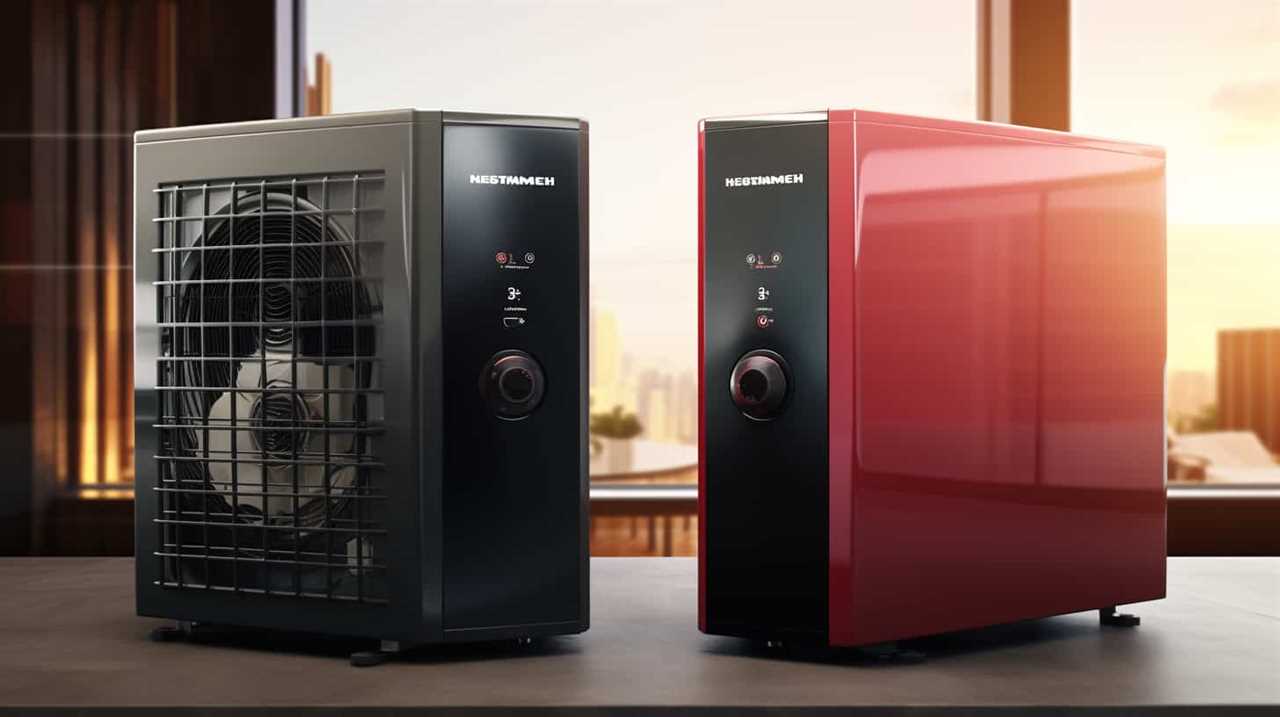
Annual Professional Inspections
During annual professional inspections, we ensure that your heat pump is in optimal working condition and address any potential issues. These inspections are an essential part of annual maintenance and play a crucial role in maintaining the efficiency and longevity of your heat pump system. Our team of trained technicians will carefully inspect and test various components of your heat pump, including the compressor, refrigerant levels, electrical connections, and airflow. We will also clean and lubricate necessary parts, such as the fan blades and condenser coils, to ensure proper functioning. In addition, we will check for any signs of wear and tear or potential malfunctions. By conducting these thorough inspections, we can proactively identify and resolve any issues, preventing costly breakdowns and ensuring that your heat pump operates at its best all year round.
| Component | Inspection and Maintenance |
|---|---|
| Compressor | Check for proper operation and lubrication |
| Refrigerant Levels | Measure and adjust as needed |
| Electrical Connections | Inspect for loose connections or signs of damage |
| Airflow | Test and clean filters, vents, and ductwork |
| Fan Blades and Condenser Coils | Clean and lubricate for optimal performance |
Troubleshooting Common Issues With Heat Pumps
When diagnosing common issues with heat pumps, we recommend starting by checking the thermostat settings. This is often the first place to look because incorrect settings can cause the heat pump to malfunction or not produce the desired temperature.
If the thermostat is set correctly, here are four troubleshooting techniques to help you identify and resolve common problems:
-
Check the air filters: Dirty or clogged filters can restrict airflow and reduce the efficiency of the heat pump. Clean or replace the filters regularly to ensure proper airflow.
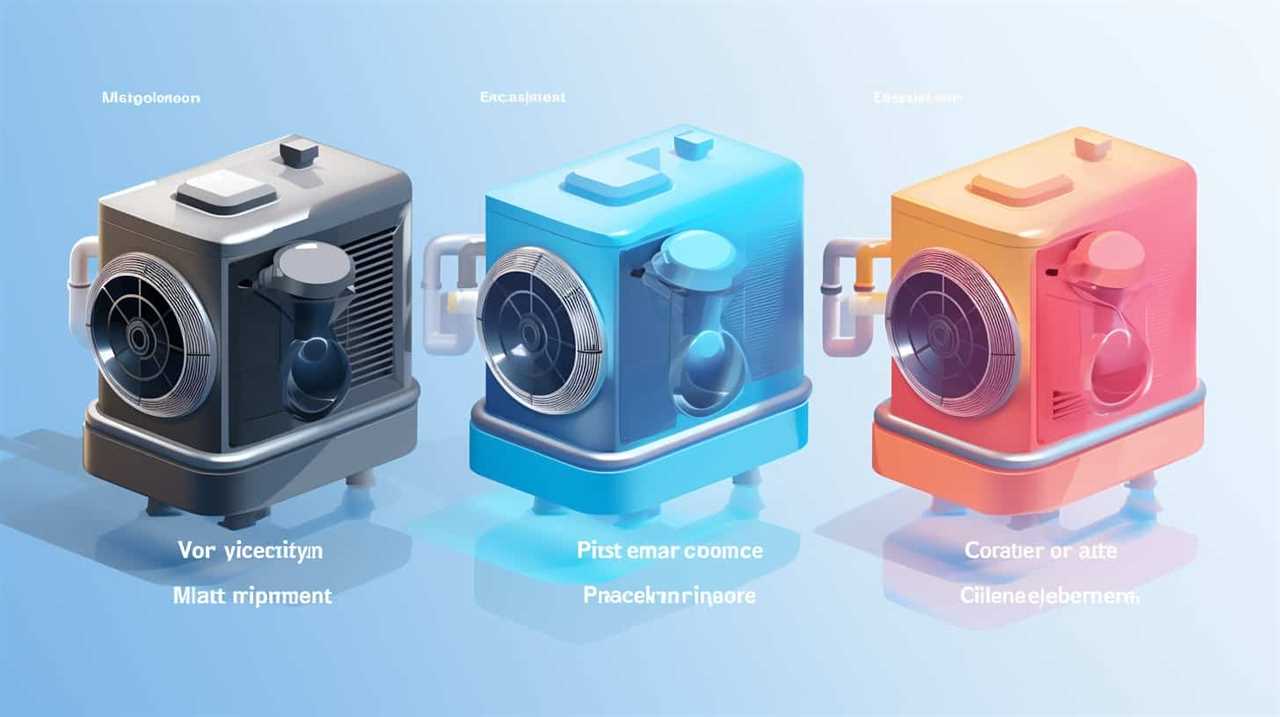
-
Inspect the outdoor unit: Make sure the outdoor unit is clear of debris and vegetation. Blocked airflow can cause the heat pump to overheat or malfunction.
-
Check for refrigerant leaks: Low refrigerant levels can affect the heat pump’s performance. Look for signs of leaks, such as oil stains or hissing sounds, and contact a professional for repairs.
-
Test the electrical connections: Loose or damaged electrical connections can cause the heat pump to stop working. Inspect the wiring and connections, and tighten or replace as needed.
Upgrading and Upkeeping Your Residential Heat Pump
To ensure optimal performance and longevity of our residential heat pump, we recommend regularly inspecting and maintaining the system. Not only will this help prevent any potential issues from arising, but it will also save energy and increase efficiency. When it comes to upgrading options, consider investing in a variable speed compressor or a two-speed heat pump. These upgrades can improve the overall performance of your system and provide better temperature control. Additionally, make sure to regularly clean or replace the air filters, as clogged filters can reduce airflow and strain the system. Another energy-saving tip is to utilize programmable thermostats and set them to adjust the temperature when you are away from home. By implementing these upgrades and following these energy-saving tips, you can maximize the efficiency and lifespan of your residential heat pump.
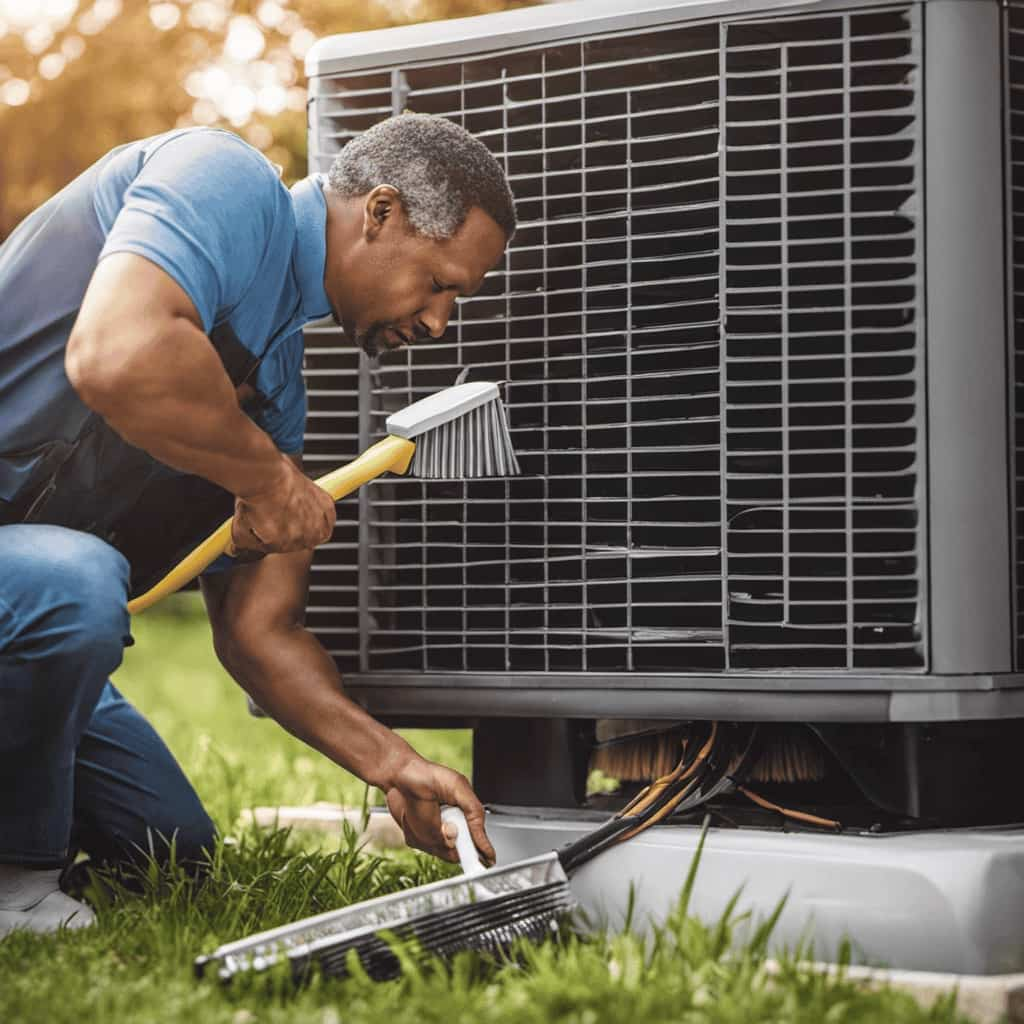
| Upgrading Options | Energy Saving Tips |
|---|---|
| Variable speed compressor | Utilize programmable thermostats |
| Two-speed heat pump | Set temperature when away from home |
| Regularly clean or replace air filters |
Frequently Asked Questions
Can I Install a Heat Pump in a Home Without Existing Ductwork?
Yes, you can install a heat pump in a home without existing ductwork. There are options for non-ducted homes, such as ductless mini-split systems or hydronic heating systems. These provide alternative heating solutions for homes without ductwork.
How Much Does a Residential Heat Pump Installation Typically Cost?
Residential heat pump installation costs can vary depending on factors such as the size and type of heat pump, existing ductwork, and location. For example, a typical installation may range from $5,000 to $15,000.
Are There Any Government Incentives or Rebates Available for Installing a Residential Heat Pump?
Yes, there are government incentives and heat pump rebates available for installing a residential heat pump. These programs can help offset the cost of installation and make it more affordable for homeowners.
Can a Heat Pump Be Used as the Sole Heating and Cooling System in a Home?
Using a heat pump as the sole heating and cooling system in a home has its pros and cons. It can be cost effective, but it may not provide enough warmth in extremely cold climates.
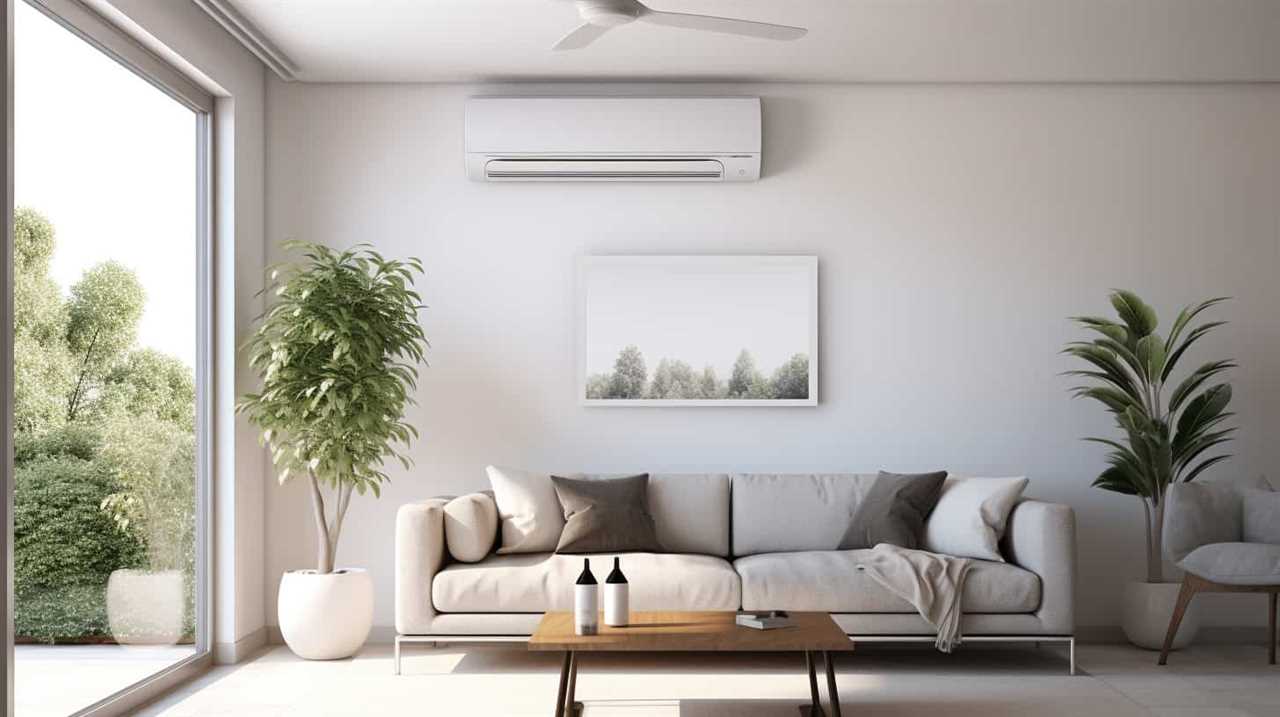
How Often Should a Residential Heat Pump Be Serviced and Maintained?
Residential heat pump maintenance frequency depends on various factors such as usage and climate. Regular servicing is crucial to ensure optimal performance and prevent potential issues. Signs of a malfunctioning heat pump include insufficient heating or cooling, strange noises, and increased energy consumption.
Conclusion
In conclusion, the installation and service of residential heat pumps require careful consideration and expertise. By choosing the right heat pump for your home, sizing and placing it correctly, and following essential maintenance tips, you can ensure efficient and effective operation.
Troubleshooting common issues and upgrading when necessary will help prolong the lifespan of your heat pump. Imagine a comfortable and energy-efficient home, with a reliable heat pump system keeping you cozy throughout the seasons.




